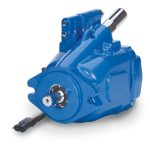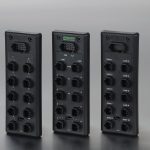Top 10 Hydraulic Troubleshooting Tools
by: Ron Durante, Director – MRO Services
Price On-Site service technicians are out on hydraulic service and emergency calls all day, every day. It’s essential to have the right tools available to tackle any kind of problem that might arise. Whether you are a machine operator, an operations specialist, or maintenance supervisor, these tools will help you diagnose the majority of issues you may face on the plant floor and in the field. Here is my top ten list:
1. Schematics
With a good schematic you can troubleshoot over the phone and quickly diagnose possible causes to a problem by listing them in order of probability. Troubleshooting without a schematic is like trying to find an address without a map; it forces you to waste valuable time. Without a schematic, you may have to resort to random changing out of components to solve a problem.
2. The Internet
What can I say about the all-powerful Internet? Anything you want to know is just a Google search away. Many hydraulic suppliers have great information on their sites that help us out in the field. One site we like is Sun Hydraulics. They allow you to check detailed product information, schematics, download service manuals, and even gain access to 3D models.
3. Smart phones
Smart phones allow you to get free Internet access wherever there is a Wi-Fi hotspot. Taking photos and videos of machines and components can be a vital tool when diagnosing a problem in the field. FaceTime on the iPhone is an excellent tool when you need to consult someone who is not physically at the project site. There are also many great apps for iPhones and iPads that are helpful.
4. Compressed air and blowguns
These are invaluable for cleaning and inspecting, both before and after disassembly. The last thing you want to do while troubleshooting is create additional problems by allowing new contamination to enter the system.
5. Brake cleaner
We use this so often that we purchase it by the case. It works great for cleaning and inspecting parts.
6. O-ring kit
Inevitably you will be replacing seals. Sometimes an o-ring is the root cause of a problem and it’s a good practice to replace them when reassembling a component.
7. Laser heat gun
Bypassing oil causes heat. Use a laser heat gun to check relief valves for bypass, pumps for slippage, or valves for partial openings.
8. Inspection light
You must have adequate light to read component labels, as well as parts and pieces – especially in windowless and dark areas, such as in foundries and factories. A light with fiber optics is particularly useful when doing manifold tracing.
9. Allen wrench set
There are many valves you can remove and disassemble with a simple Allen wrench set. Small ones work well for operating manual overrides. I use a tiny Allen wrench on an energized coil as it becomes magnetized, because once the valve is de-energized, the Allen wrench will fall off.
10. White paper
I find it is useful have a roll of heavy weight white paper for creating a ‘clean area’ for disassembly, cleaning, inspection, and reassembly of components and parts. It keeps oil localized and visible. Furthermore, it doesn’t allow it to spread to the clean surrounding areas.
Do you think anything is missing from this list? If you have a favorite tool that you use, please share it with us!
More from my site
Leave a Reply
-
Archives
- August 2022
- April 2022
- August 2021
- December 2020
- August 2020
- January 2019
- September 2018
- March 2018
- February 2018
- December 2017
- November 2017
- October 2017
- September 2017
- May 2017
- April 2017
- March 2017
- February 2017
- October 2016
- September 2016
- August 2016
- July 2016
- June 2016
- March 2016
- September 2013
- July 2013
- March 2013
- January 2013
- December 2012
- November 2012
- October 2012
- September 2012
- August 2012
- July 2012
- June 2012
- May 2012
- April 2012
- March 2012
- February 2012
Signup Today
to get our monthly Enews delivered to your inbox.










